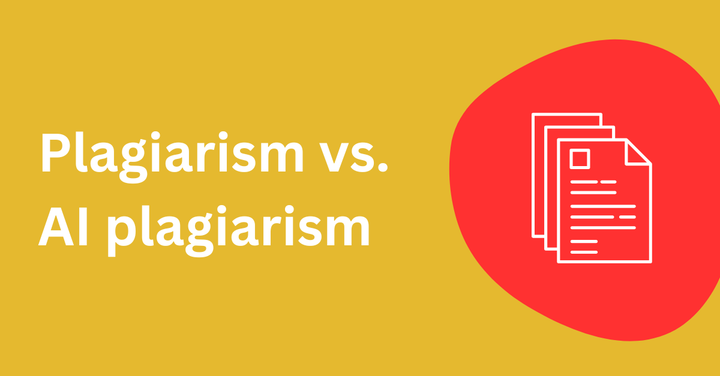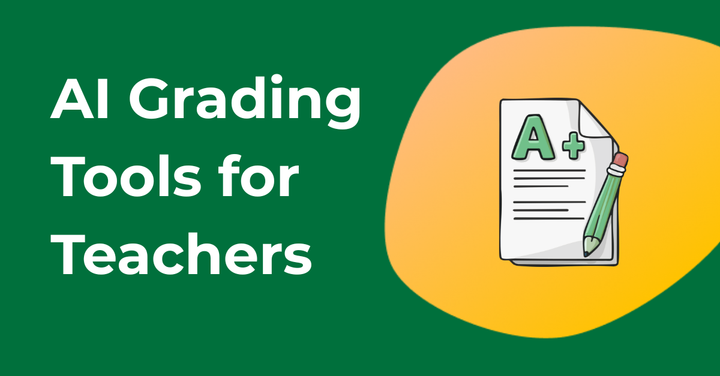How to Make ChatGPT-Proof Classroom Assignments
Looking for ideas on setting assignments that outsmart ChatGPT? Here, we explore the art of designing AI-proof assignments.

Tools like ChatGPT create new challenges that go beyond just integrating tech. Instead, it’s about keeping students engaged with assignments they can’t just “AI” their way through. Having spoken to plenty of teachers looking for new ways to teach in a post-ChatGPT world, we’ve collected various tips on how to “AI-proof” your assignments.
Here’s a practical breakdown of how to adapt assessments to encourage genuine learning and minimize student reliance on AI.
Strategies for AI-resistant assignments
To make assignments that AI tools can’t handle, you need creative prompts that ask for students’ unique input. Instead of generic questions, it’s about asking for answers that encourage students to justify their opinions and make connections across multiple sources.
Get specific on the structure
Instead of assigning a five-paragraph essay, set detailed guidelines that AI struggles to follow. For example: “In the second paragraph, the third sentence must introduce a counterargument,” or, “The final sentence in paragraph four should use terms from the topic sentence.” AI tools simply aren’t built to catch these types of specifics.
Focus on timely content
Personalized and real-world prompts make it a lot harder for AI to produce relevant answers. If students are reading The Hunger Games, ask for a comparison with a recent movie, like Black Panther – exploring themes like courage and challenging oppressive systems. This type of prompt asks for connections between the texts, getting students to dig between the lines for character motivation and societal messages (which AI struggles with).
Include Reflective components
When students are asked to outline their thought process, it can deepen their understanding of a topic. Bringing in an element of reflection to an assignment can make AI assistance less feasible. For example, ask: “What challenges did you come across during this project, and what did you learn by overcoming them?”
Encourage process documentation
Ultimately, a core part of creating AI-proof assignments is encouraging the demonstration of a documented process. Get students to submit drafts, work versions, and annotated sources – this helps to build their research skills, and also shows exactly how they interacted with their sources.
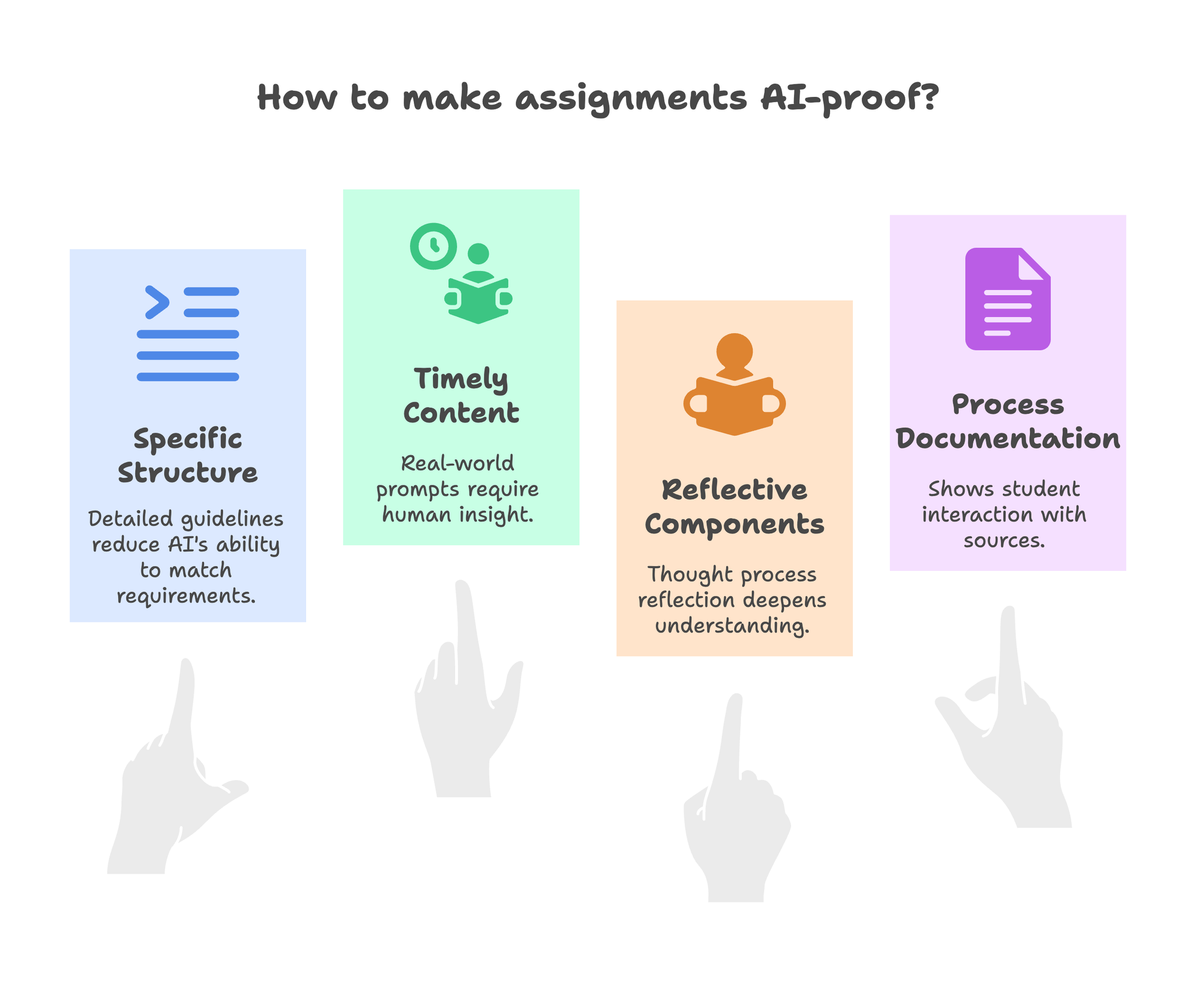
Lean on real-time, in-person engagement
Keeping assessments student-driven means testing their real-time thinking, understanding, and unique perspectives – by taking a creative and strategic approach.
Use oral exams and presentations
Oral exams test a student’s understanding and critical thinking in real time, in a way that AI cannot replicate. Making it a habit of having a brief Q&A after a presentation helps teachers to quickly gauge whether students have actually synthesized the information they have presented, or if they are simply reciting what an AI tool might have generated.
Introduce open-book, open-note assessments
Make sure assessments focus on that same element (synthesizing) and applying the knowledge – as opposed to simple rote memorization. An open-book assessment might ask, “Compare two historical leaders’ approaches to resolving conflict and discuss how these could be adapted today.” This type of format makes it much harder to use AI for an answer.
Encourage peer review
Peer review means that students are engaging critically with one another’s work, and this element of having to discuss and defend their ideas in small groups can exercise their thinking in a way that AI cannot. In working alongside peers in this way, AI-generated materials also become simpler to spot.
Test your prompts with AI tools
Before you set an assignment, run it through an AI tool like ChatGPT. If it is really easy for ChatGPT to generate a comprehensive response, keep altering the question until a deeper level of analysis or personal insight is required.
Assignment types that go beyond AI’s reach
These assignments specifically tap into what AI doesn’t have: creativity, critical thinking, and personal engagement.
Pen-and-paper assessments
Handwritten essays that are completed in class show a student’s thought process as well as their authentic voice (which any AI tool would struggle to imitate). This can work especially well when it comes to foundational knowledge checks and timed essays.
Community projects
Projects that demand students do real-world exploration through surveys or interviews or local research mean that they connect directly with their local community. For example: “Explore the impact of a local environmental issue through surveys and firsthand interviews, and share your findings in a presentation.”
Personalized research
This type of assignment asks students to conduct original research, collect data, or interview local experts – requiring them to then share personal insights and analysis based on that data. For example: “Choose a historical event or figure from the local community. Analyze their impact on the community and share your findings in a written report.”
Interactive debates or mock trials
Creating assignments where students participate in debates or take on roles in historical reenactments means that they have to think spontaneously. For example, “Organize a mock trial where students are in teams to represent the prosecution, defense, or jury.” They analyze evidence, develop persuasive arguments, and cross-examine witnesses while adapting to unexpected turns in the trial.
Flipping the classroom
Many teachers are already applying this approach, which is essentially about assigning reading material for homework, then getting students to complete assignments inside the classroom, where they can ask for guidance. This gives you more chances to support students directly. It also helps you give students opportunities to build their time management skills, as well as prioritization, selecting quality sources, and other tools they will need in the future.
Use homework as preparation (not output)
In a flipped classroom, homework isn’t the end product: it’s the preparation. Instead of assignments to complete at home, provide reading materials or background information that students need to look at before class. Then, when they come to class, they should be ready to engage and apply what they’ve learned, then and there.
Class time for application and discussion
In class, students can work on tasks like group discussions, or problem-solving activities that require direct input and critical thinking. This means you can step in and give them guidance as required, and also primes the students to dive into more meaningful work while they’re in the classroom.
Real-time assessment
In a flipped classroom, assessments happen in real time. This makes it infinitely easier to gauge if there’s AI-generated or inauthentic work. In-class discussions, quick quizzes, and group activities can help you observe students’ comprehension levels and engage with them on the material, on a personal level.
Being open to AI
Some teachers are embracing the rise of AI as part of their assignments, demonstrating through example to students how to use it responsibly. As our guest blogger Kellie explains, “Just like students quickly learn that Wikipedia is not a reliable, stand-alone source, they also need to know how to properly use ChatGPT and other content-generating tools and what their limitations are.”
For example, teachers might ask students to input a prompt into ChatGPT; include both the prompt and AI’s response in their work; then build on it with their own analysis or research. This demystifies AI and turns it into a learning tool rather than one that can provide a shortcut. It helps students gain valuable skills in evaluating information quality.
A new era of AI-Resistant Learning
Although it is still an adjustment for many – AI is here to stay and is likely to play an increasingly vital role in how students engage in the world around them. This inevitably means that the way we are used to setting students up for success has shifted. While it is still early days for AI-resistant learning, educators are already finding creative ways to adapt using the strategies above.
In a nutshell, embracing creativity and problem-solving helps students prepare for a world where AI is simply a tool rather than the answer itself. The above strategies also encourage students to integrate technology with their learning – without sacrificing the human aspects of education. More and more teachers are looking for AI-proof assignments and practical ways to design assignments that ChatGPT cannot do. How can you make assignments ChatGPT-proof so students keep using their own original ideas, and their own critical thinking skills?
At GPTZero, we’ve worked with thousands of educators looking for new ways to teach in a post-ChatGPT world. Many are experimenting with AI-proof assignments that protect academic integrity. In this guide, we break down what actually works when designing ChatGPT-proof assignments.
Strategies for AI-resistant assignments
The first thing to remember is that there is no single magic, foolproof strategy: AI-resistant assignments work best as part of a layered approach. As Anna Mills, a leader in the integration of artificial intelligence in education, has noted: a “Swiss cheese” strategy for AI in education means combining layered, imperfect tools to protect learning and integrity.
With that in mind, the goal is to make assignments that AI tools can’t handle, requiring creative prompts that ask for students’ unique input. This means skipping generic questions and instead asking for answers that encourage students to justify their opinions and make connections across multiple sources, which lies at the heart of AI resistant assignments.
To do this, the following can help:
Get specific on the structure of AI-Proof assignments
Instead of assigning a five-paragraph essay, set detailed guidelines that make the task more ChatGPT proof. For example: “In the second paragraph, the third sentence must introduce a counterargument,” or, “The final sentence in paragraph four should use terms from the topic sentence.” These constraints make it far less likely that generic AI outputs will meaningfully match the assignment’s requirements.
Using timely content
Personalized and real-world prompts make it a lot harder for AI to produce relevant answers. If students are reading The Hunger Games, ask for a comparison with a recent movie, like Black Panther – exploring themes like courage and challenging oppressive systems. This type of prompt asks for connections between the texts, getting students to dig between the lines for character motivation and societal messages (which AI struggles to do).
Include reflective components
When students are asked to outline their thought process, it can deepen their understanding of a topic. Bringing in an element of reflection to an assignment can make AI assistance less feasible. For example, ask: “What challenges did you come across during this project, and what did you learn by overcoming them?” Reflection tasks are one of the strongest approaches for AI-proofing assignments.
Encourage process documentation
Ultimately, a significant part of creating AI-proof assignments is encouraging the demonstration of a documented process. Get students to submit drafts, work versions, and annotated sources – all of this helps to build their research skills, and also shows exactly how they interacted with their sources.
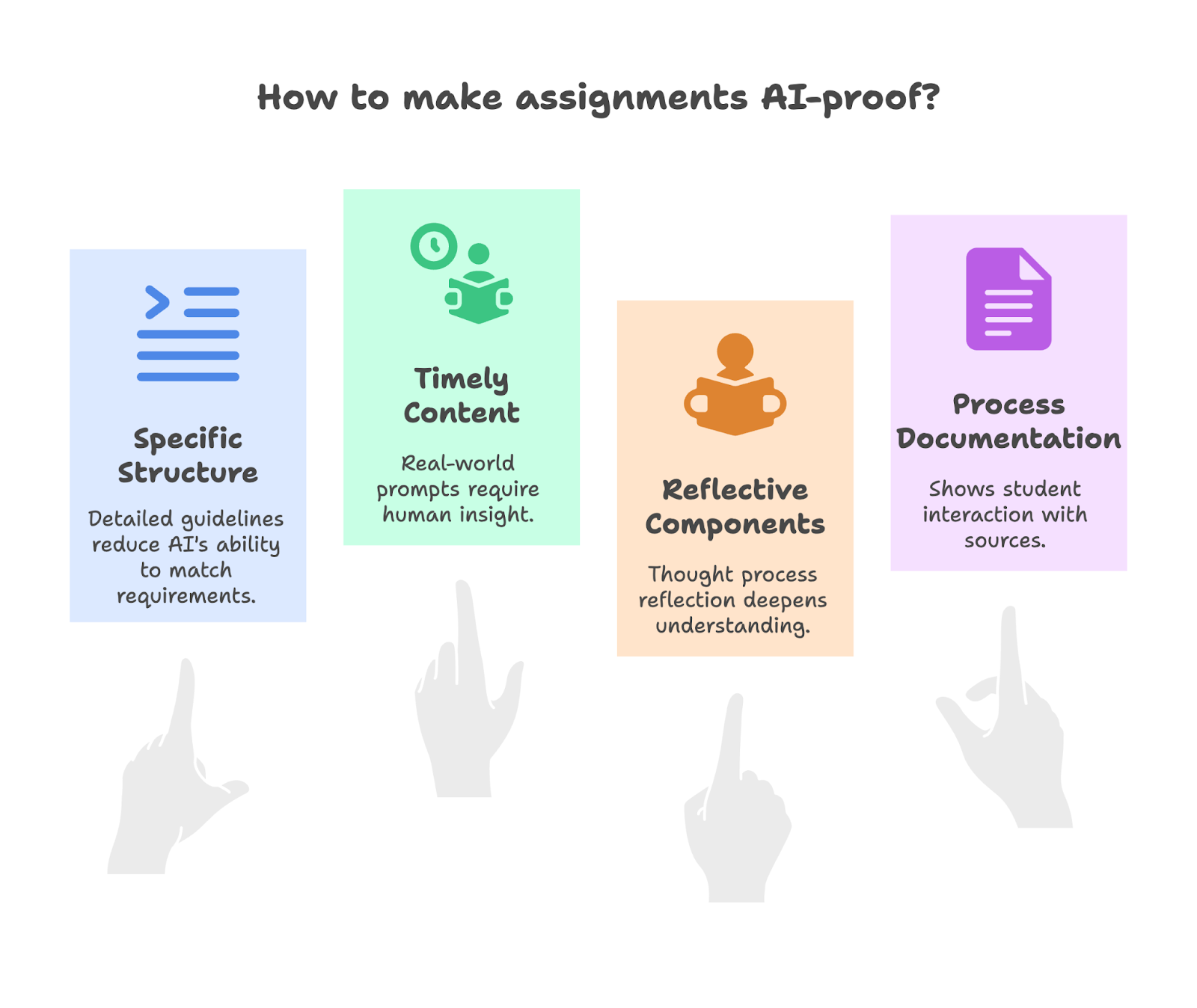
When real-time engagement creates AI-resistant assignments
This is all an incredibly new field, and Inside Higher Ed argues that “answers to questions concerning how to design and scale assessments, as well as how to help students learn to mitigate the tool’s inherent risks are, at best, works in progress”. However, what we already know is that keeping assessments student-driven means testing their real-time thinking and unique perspectives, by taking a creative and strategic approach.
Real-time engagement moves the onus away from producing an answer to showing how they arrive at one, which strengthens critical thinking and makes it harder for students to rely on AI-generated work.
Teachers tell us that the more dynamic and responsive an activity is, the more naturally it becomes an AI-resistant assignment, which even the most advanced chatbot cannot meaningfully complete on any student’s behalf.
Here are some popular examples we’ve heard about:
Oral exams and presentations
Oral exams test a student’s understanding and critical thinking in real time, in a way that AI cannot replicate. Making it a habit of having a brief Q&A after a presentation helps teachers to quickly gauge whether students have actually synthesized the information they have presented, or if they are simply reciting what an AI tool might have generated.
Open-book, open-note assessments
Make sure assessments focus on that same element (synthesizing) and applying the knowledge – as opposed to simple rote memorization. An open-book assessment might ask, “Compare two historical leaders’ approaches to resolving conflict and discuss how these could be adapted today.” This type of format makes it much harder to use AI for an answer and is common in AI-proof assignments.
Peer review
Peer review means that students are engaging critically with one another’s work, and this element of having to discuss and defend their ideas in small groups can exercise their thinking in a way that AI cannot. In working alongside peers in this way, AI-generated work becomes faster to spot, making the assignment more ChatGPT-proof.
Testing prompts with AI tools
Before you set an assignment, run it through an AI tool like ChatGPT. If it is really easy for ChatGPT to generate a comprehensive response, keep altering the question until a deeper level of analysis or personal insight is required.
Join thousands of educators who use GPTZero to support authentic writing and transparent assessment.
Assignments ChatGPT cannot do: examples that resist AI
It’s also worth remembering the types of assignments that AI fundamentally can and cannot do. Yes, AI is exceedingly capable of producing surface-level responses, but it really has a hard time when tasks ask for personal insight, lived experience, original data, or spontaneous reasoning. Teachers tell us that fully understanding this contrast helps them design assessments that naturally reduce AI misuse:
The below assignments specifically tap into what AI doesn’t have (creativity, critical thinking, and personal engagement) and many teachers use these when trialling how to AI proof assignments.
Pen-and-paper assessments
Our Community Lead, Mana Setayesh, recently attended the NCTE (National Council of Teachers of English)’s Annual Convention in Denver, and said: “What surprised me was seeing that more teachers are pivoting to handwritten assignments. While it might seem quite old school, reverting to pen-and-paper work seems like a truly AI-proof way to proceed with homework.”
Handwritten essays that are completed in class show a student’s thought process as well as their authentic voice (which any AI tool would struggle to imitate). This can work especially well when it comes to foundational knowledge checks and timed essays.
Community projects
Projects that demand students do real-world exploration through surveys or interviews or local research mean they connect directly with their local community. For example: “Explore the impact of a local environmental issue through surveys and firsthand interviews, and share your findings in a presentation.”
This is an example of assignments that ChatGPT cannot do, because, as EdWeek says, “ChatGPT doesn’t have a strong background in hyperlocal issues.” This is why “educators may be able to minimize how much help ChatGPT can be on a particular assignment by grounding it in the school community.”
Personalized research
This type of assignment asks students to conduct original research, collect data, or interview local experts – requiring them to then share personal insights and analysis based on that data. For example: “Choose a historical event or figure from the local community. Analyze their impact on the community and share your findings in a written report.”
Interactive debates or mock trials
Creating assignments where students participate in debates or take on roles in historical reenactments means that they have to think spontaneously. For example, “Organize a mock trial where students are in teams to represent the prosecution, defense, or jury.” They analyze evidence, develop persuasive arguments, and cross-examine witnesses while adapting to unexpected turns in the trial.
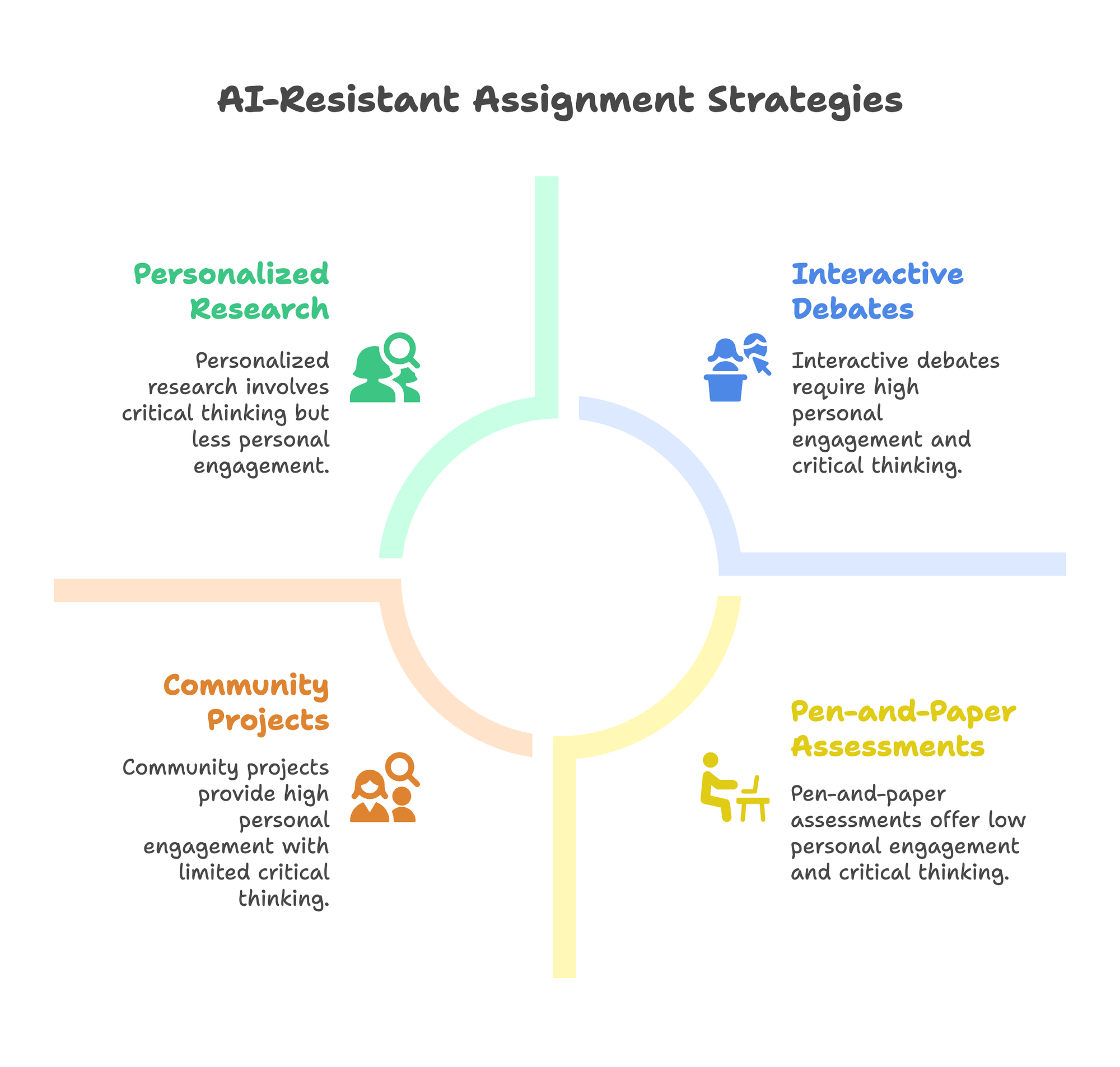
Flipped learning as an AI-resistant strategy
Many teachers are already applying this approach, which is essentially about assigning reading material for homework, then getting students to complete assignments inside the classroom, where they can ask for guidance. This gives you more chances to support students directly. It also helps you give students opportunities to build their time management skills, as well as prioritization, selecting quality sources, and other tools they will need in the future.
Use homework as preparation (not output)
In a flipped classroom, homework isn’t the end product: it’s the preparation. Instead of assignments to complete at home, provide reading materials or background information that students need to look at before class. Then, when they come to class, they should be ready to engage and apply what they’ve learned, then and there.
Class time for application and discussion
In class, students can work on tasks like group discussions, or problem-solving activities that require direct input and critical thinking. This means you can step in and give them guidance as required, and also primes the students to dive into more meaningful work while they’re in the classroom.
Real-time assessment
In a flipped classroom, assessments happen in real time. This makes it infinitely easier to gauge if there’s AI-generated or inauthentic work. In-class discussions, quick quizzes, and group activities can help you observe students’ comprehension levels and engage with them on the material, on a personal level.
How GPTZero supports AI-resistant assignment design
GPTZero is used in over 3,500 colleges and by 100+ institutions to support writing transparency and academic integrity. We’re proud to give teachers confidence to create tasks where genuine student thinking is non-negotiable.
With features like Writing Report and the Hallucination Detector, teachers can quickly see whether AI was used at any point in a student’s submission. This is what helps to enforce “no-AI” policies and design assessments where relying on AI tools becomes too risky for students to even think about. As always, AI detection is one tool among many, and ideally it is matched with strong pedagogy and open conversations to give you the most accurate context.
GPTZero’s Writing Replay, which shows exactly how a piece was written, edited, and pasted
It’s also worth mentioning that different institutions have different AI policies, and some teachers in the GPTZero community are using the tool to support assignments where AI is allowed. Eddie del Val, who teaches composition at Mt. Hood Community College in Oregon, uses AI in his classroom in a bounded (not banned) way.
Students can use it to brainstorm, revise, and explore ideas, but the voice, structure, and substance has to be theirs. He uses GPTZero himself, and encourages his students to do the same.
“Since my students know exactly which AI detection software I am using (primarily GPTZero) they can use that same software and make sure that their final uploaded essay won’t be flagged for AI overdependence.” In his classroom, GPTZero acts as a safeguard that nudges students back toward their own ideas, which is exactly what AI-resistant assignment design is all about.
The future of AI-proof assignments
Although it is still an adjustment for many, AI is here to stay and is likely to play an increasingly vital role in how students engage in the world around them. This inevitably means that the way we are used to setting students up for success has shifted. While it is still early days for AI-resistant learning, educators are already finding creative ways to adapt using the strategies above.
In a nutshell, embracing creativity and problem-solving helps students prepare for a world where AI is simply a tool rather than the answer itself. The above strategies also encourage students to integrate technology with their learning, without sacrificing the human aspects of education.

